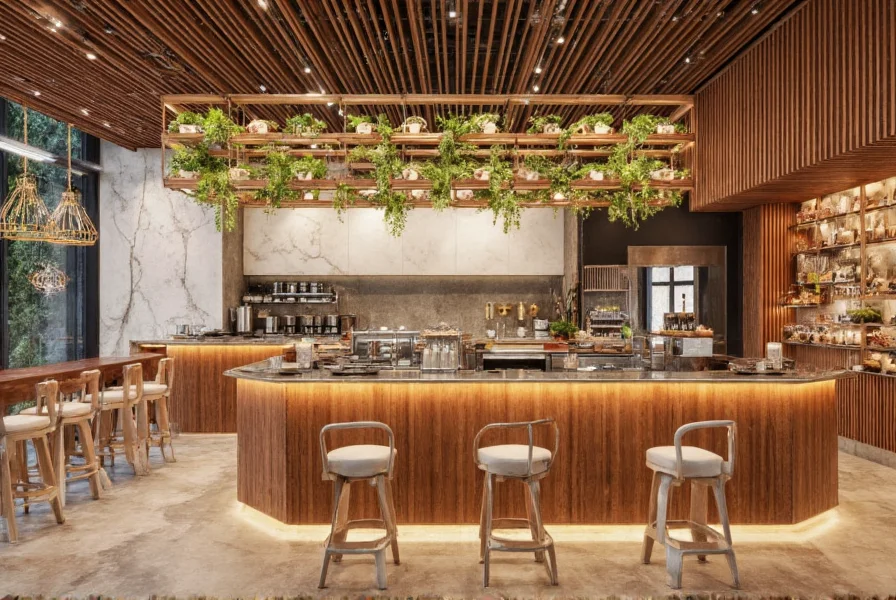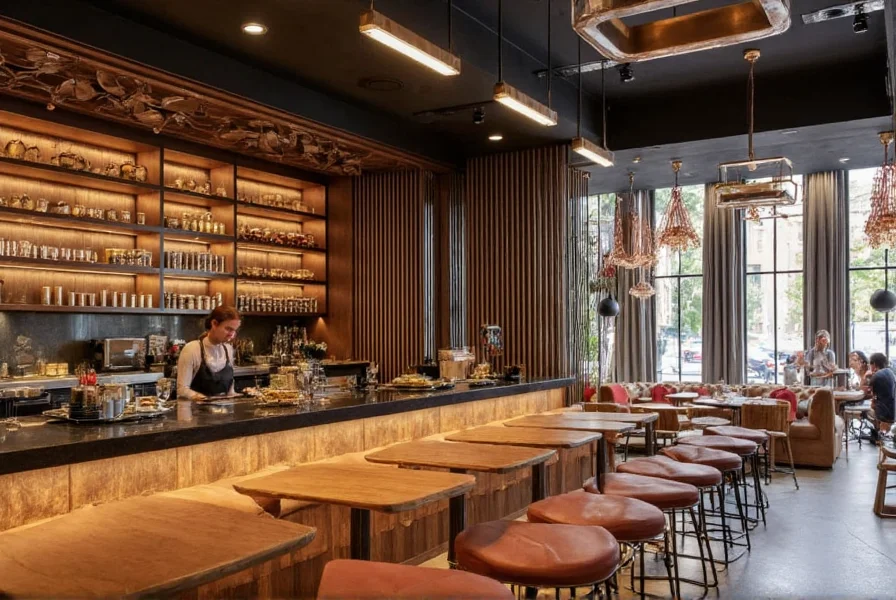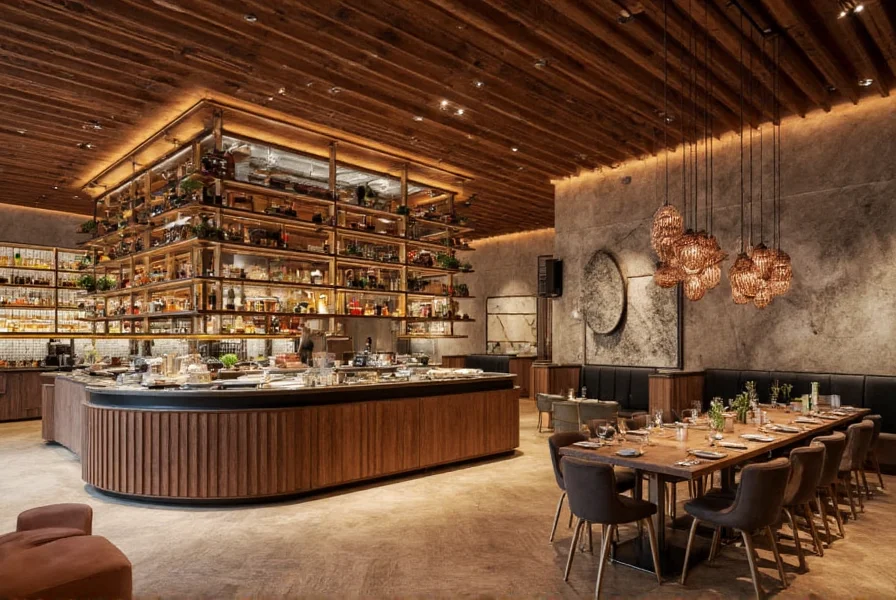For diners seeking authentic Asian noodle dishes with wild ginger, these specialized establishments provide a unique culinary experience that distinguishes them from standard noodle restaurants. Wild ginger, known botanically as Zingiber zerumbet, offers a more complex, floral, and less pungent flavor profile compared to common ginger, creating distinctive broths and sauces that elevate traditional noodle preparations.
The Culinary Significance of Wild Ginger in Noodle Dishes
Wild ginger's unique properties make it particularly valuable in noodle cuisine. Unlike regular ginger which can dominate a dish with its sharp heat, wild ginger contributes subtle citrus notes and a delicate floral aroma that complements rather than overwhelms other ingredients. Chefs at authentic wild ginger noodle bars typically use the rhizome in multiple forms—freshly grated for marinades, thinly sliced for broths, and sometimes dried and powdered for finishing dishes.
When evaluating what makes wild ginger different in noodle dishes, food scientists note its lower gingerol content (the compound responsible for ginger's heat) and higher levels of zerumbone, which provides anti-inflammatory benefits while contributing to the distinctive flavor profile. This makes wild ginger noodle bar offerings particularly appealing to diners seeking both culinary enjoyment and potential health benefits.

Menu Structure and Signature Offerings
Typical wild ginger noodle bar menus feature carefully curated selections that showcase the versatility of this ingredient. Most establishments organize their offerings into several key categories:
| Menu Category | Signature Dishes | Wild Ginger Application |
|---|---|---|
| Traditional Broth Noodles | Wild Ginger Tonkotsu Ramen, Lemongrass Ginger Pho | Simmered for 18+ hours to extract maximum flavor without bitterness |
| Cold Noodle Specialties | Ginger-Chilled Soba, Vietnamese Cold Vermicelli | Freshly grated into dipping sauces and dressings |
| Fusion Creations | Wild Ginger Udon Carbonara, Thai Basil Ginger Lo Mein | Infused into oils and cream bases for unexpected flavor combinations |
| Vegetarian Options | Mushroom Wild Ginger Ramen, Tofu Ginger Noodle Soup | Used as primary flavor base to compensate for absence of meat stocks |
Dining Experience and Atmosphere
Wild ginger noodle bars typically create an atmosphere that balances casual accessibility with thoughtful design elements reflecting their culinary focus. Most feature open kitchens where guests can observe the meticulous preparation of broths, which often simmer for 18-24 hours to properly extract wild ginger's complex flavors without developing bitterness.
The service model at these establishments generally follows a streamlined system optimized for noodle preparation—orders are typically taken at the counter, with food arriving quickly as noodles are cooked to order. This approach maintains the ideal texture while accommodating what many diners consider when choosing a wild ginger noodle bar: the perfect balance between convenience and culinary quality.
Nutritional Profile and Dietary Accommodations
One factor contributing to the growing popularity of wild ginger noodle bars is their ability to offer healthier noodle options with wild ginger while maintaining flavor complexity. Wild ginger contains compounds with potential anti-inflammatory properties, and many establishments highlight this aspect without making medical claims.
Most quality-focused wild ginger noodle restaurants provide multiple dietary accommodations:
- Gluten-free noodle alternatives using rice, mung bean, or sweet potato starch
- Vegan broth options that maintain depth without animal products
- Customizable spice levels to accommodate varying palates
- Low-sodium broth preparations upon request
When exploring healthy noodle options with wild ginger, diners should look for establishments that transparently share their preparation methods and ingredient sources, as the quality of wild ginger significantly impacts both flavor and potential health benefits.

How Wild Ginger Noodle Bars Differ from Standard Noodle Establishments
The key differentiator of dedicated wild ginger noodle bars lies in their specialized focus on this particular ingredient. While many Asian restaurants might use regular ginger in their dishes, true wild ginger establishments build their entire culinary concept around Zingiber zerumbet's unique properties.
This specialization manifests in several ways:
- Sourcing practices: Establishments committed to authentic wild ginger noodle bar experiences typically source directly from specialty growers, as wild ginger is less commonly available than regular ginger
- Preparation techniques: Staff receive specific training on handling wild ginger to maximize flavor while avoiding bitterness
- Menu development: Dishes are engineered to showcase wild ginger's unique profile rather than using it as a generic flavoring
- Seasonal variations: Menus often change to feature wild ginger at its peak freshness during summer months
For diners researching what makes wild ginger different in noodle dishes, understanding these distinctions helps identify establishments offering genuinely specialized experiences rather than those merely using "wild ginger" as a marketing term.
Locating Authentic Wild Ginger Noodle Experiences
When searching for the best wild ginger noodle bar near you, consider these factors to ensure an authentic experience:
- Check if the menu specifically mentions Zingiber zerumbet or provides details about their wild ginger sourcing
- Look for restaurants where wild ginger features prominently across multiple menu sections, not just as a single specialty item
- Read reviews that mention the distinctive flavor profile (floral, less pungent) rather than just "ginger" flavor
- Consider establishments that explain wild ginger's seasonal availability in their communications
Many cities with significant Asian culinary scenes now feature dedicated wild ginger noodle bars, particularly in neighborhoods with strong Vietnamese, Thai, or Malaysian influences where wild ginger is traditionally used. When evaluating potential locations, examine whether the establishment demonstrates genuine expertise with this specific ingredient rather than simply incorporating it as a trendy addition.
Frequently Asked Questions
What exactly is wild ginger and how does it differ from regular ginger in noodle dishes?
Wild ginger (Zingiber zerumbet) has a more floral, citrusy flavor profile with less heat than common ginger (Zingiber officinale). In noodle dishes, it provides complex aromatic notes without overwhelming other ingredients, and contains different compounds that may offer distinct health properties. Chefs value it for creating nuanced broths that remain flavorful without becoming too spicy.
Are wild ginger noodle bars typically more expensive than regular noodle restaurants?
Prices at authentic wild ginger noodle bars often reflect the specialty ingredient's cost and preparation requirements. Wild ginger is less commonly cultivated and requires specific handling, which may result in prices 15-25% higher than standard noodle establishments. However, many consider this justified by the distinctive flavor experience and potential health benefits of properly prepared wild ginger dishes.
Can I find gluten-free options at most wild ginger noodle bars?
Most dedicated wild ginger noodle bars offer multiple gluten-free options, recognizing that noodle dishes often present challenges for gluten-sensitive diners. They typically provide rice noodles, mung bean threads, or sweet potato starch noodles as alternatives. When ordering, specify your dietary needs as some broths may contain wheat-based ingredients, though many establishments specializing in wild ginger cuisine have developed naturally gluten-free broth preparations.
How can I tell if a restaurant is using genuine wild ginger rather than regular ginger?
Authentic wild ginger noodle bars will typically describe the distinctive flavor profile (floral, citrus notes, less pungent heat) rather than just "ginger" flavor. They may explain their sourcing practices or mention Zingiber zerumbet specifically. The broth should have a more complex, layered flavor without the sharp heat of regular ginger. Restaurants committed to authenticity often display information about wild ginger's seasonal availability, as it's primarily harvested in summer months.
Do wild ginger noodle bars offer vegetarian or vegan options that maintain the distinctive flavor?
Yes, most quality wild ginger noodle bars offer vegetarian and vegan options that preserve the distinctive wild ginger flavor profile. Since wild ginger's unique properties don't depend on animal products, chefs can create equally flavorful plant-based broths. Many establishments specifically develop mushroom-based or vegetable broths that complement wild ginger's floral notes. When ordering, ask about their vegetarian preparation methods, as some places maintain separate cooking equipment to prevent cross-contamination.











 浙公网安备
33010002000092号
浙公网安备
33010002000092号 浙B2-20120091-4
浙B2-20120091-4